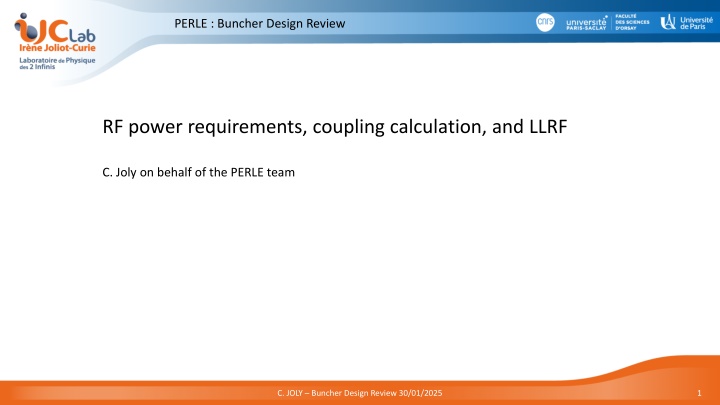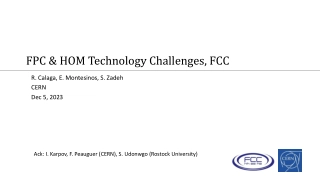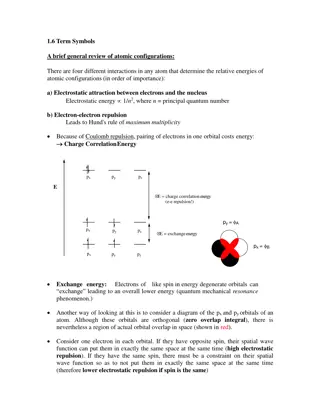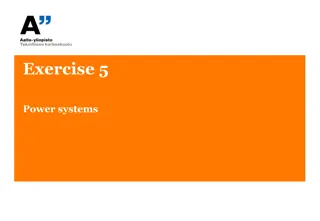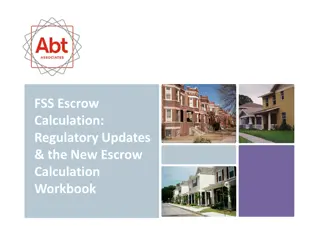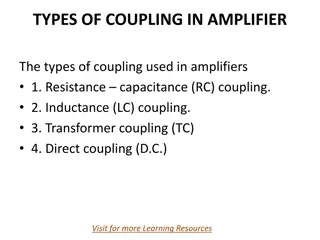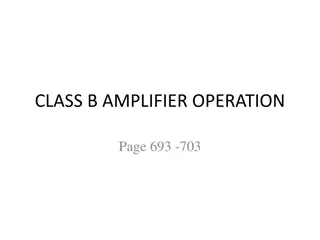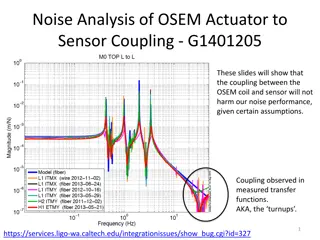Buncher Design Review: RF Power Requirements & Coupling Calculation
Parameters for RF power calculations, including frequency, bandwidth, and required power levels, are discussed along with coupling calculations for efficient power transfer. The review also addresses stability considerations for the LLRF system.
Download Presentation

Please find below an Image/Link to download the presentation.
The content on the website is provided AS IS for your information and personal use only. It may not be sold, licensed, or shared on other websites without obtaining consent from the author.If you encounter any issues during the download, it is possible that the publisher has removed the file from their server.
You are allowed to download the files provided on this website for personal or commercial use, subject to the condition that they are used lawfully. All files are the property of their respective owners.
The content on the website is provided AS IS for your information and personal use only. It may not be sold, licensed, or shared on other websites without obtaining consent from the author.
E N D
Presentation Transcript
PERLE : Buncher Design Review RF power requirements, coupling calculation, and LLRF C. Joly on behalf of the PERLE team C. JOLY Buncher Design Review 30/01/2025 1
Buncher Design Review : RF power requirements Parameters Buncher Frequency [MHz] 801.58 Beta 0.8048 Q0 2.21E4 r/Q [ ] 166.57 Qext 2.21E4 QL[Required] 1.1 E4 Bandwidth [Hz] 72667 Filling time [ s] 2.53 Eacc [MV/m] 0.608 Lacc [m] 0.126 Nb of cavities 1 Use of cables or rigid coaxial line Use of solid state amplifier 1.6 kW with new calculation 4.933kW BW ~ 72kHz RF power line attenuation Manufacturing (Q0) & Sensitivity ?KHz/ deg C Margins C. JOLY Buncher Design Review 30/01/2025 2
Buncher Design Review : RF power requirements 7/8 1 5/8 0.029 dB/m 800MHz 800MHz ~4.5 KW on load 50 Ohm 1 5/8 7/8 C. JOLY Buncher Design Review 30/01/2025 3
Buncher Design Review : RF power requirements It should better to try to limit to 4.5kW/2 = 2.25kW in case of reflected power Global margin : 2.25kW -1.6kW = 650W Margins due to the Frequency variations Steady state : due to T regulation sensitivity of the Cavity (50kHz/ C @3GHz Transient state : due to T increase of the accelerator field to the nominal value ( CPLR & cavity T ) Beam loading effect ~17kHz @20mA RF power + ~25% 2kW @0.8GHz?) Depending of T regulation performance : water cooling is slow RF tuning system : fixed plunger Margins : with Attenuation of rigid coaxial line of 0.029dB ~20m max (0.58dB) si max value = 2kW for the others margins C. JOLY Buncher Design Review 30/01/2025 4
Buncher Design Review : Coupling calculation Fixed Qext, no modification with a standard assembly variable stub needed Coupling with waveguide opening and Rf power circuit = Waveguide Fixed Qext, no modification possible variable coupler but it s more complex Cooling needed complex circuit due to the inner diameter Electric coupling via an antenna Fixed coupling but modification possible by orientation modification cooling needed can be included into the cavity cooling Magnetic coupling via an loop Goal : the minimum opening for the coupling Minimum RF power to provide allowing to use RF cable C. JOLY Buncher Design Review 30/01/2025 5
Buncher Design Review : LLRF Stability in Phase < 1 Stability in amplitude < 3% -Without LLRF system, no possible adjustments of setpoints -Depending of the water cooling performance -Use of a RF generator synchronized - A specific RF power measurements needed -With LLRF system, possible adjustments of setpoints -Synchronized too -RF power measurements integrated into the LLRF C. JOLY Buncher Design Review 30/01/2025 6
Buncher Design Review : LLRF C. JOLY Buncher Design Review 30/01/2025 7
